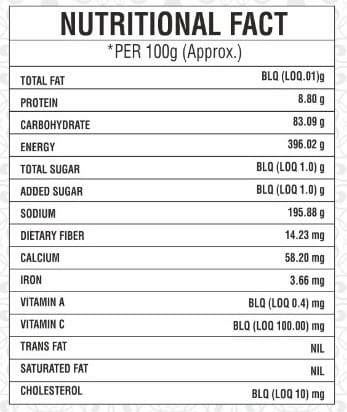
🌱 What is Makhana (Fox Nuts)?
Makhana, also known as fox nuts, lotus seeds, or gorgon nuts, are puffed seeds derived from the Euryale ferox plant, an aquatic crop native to ponds and wetlands of Eastern India, particularly in the Mithila region of Bihar, which holds a Geographical Indication (GI) tag for its unique quality Makhana.
These small white puffs are not only crunchy and delicious but also incredibly healthy. Makhana has been consumed in India for centuries, often used in traditional Ayurvedic medicine due to its cooling properties, high antioxidant content, and ability to balance Vata and Pitta doshas.
After harvesting the black seeds from the lotus plant, they are dried, roasted, and popped to become the soft, airy, and nutritious superfood we call Makhana.
Global Popularity
Once a traditional snack for Indian households and religious fasts, Makhana has now gained global recognition as a superfood. It is widely consumed in countries like the USA, UK, Australia, and UAE due to its nutritional value, versatility, and plant-based profile, making it popular among vegans, athletes, and health-conscious individuals.
From snacking to cooking, from Ayurvedic medicine to modern diets, Makhana is truly a timeless and wholesome food that blends tradition with health innovation.
Key Characteristics
Nutritional Profile
High in fiber and containing kaempferol—an anti‑aging flavonoid—it aids digestion, heart health, and blood sugar control.

Top Benefits
Makhana Sizes We Offer
At ZEST N ZING, we offer premium-quality, hand-picked makhana in various grades and sizes to suit different needs, including retail packaging, snacking, and industrial use.
| Grade Name | Diameter Size (Approx.) | Description |
|---|---|---|
| 6+ Sutta | 20 mm and above | Ideal for luxury snacking and exports |
| 5+ Sutta | 16–19 mm | Uniform shape, used for premium packaging |
| 5 Sutta | 16–17 mm | Most commonly used for daily snacking |
| 4 Sutta | 12–15 mm | Used in sweets, desserts, or value packs |
| Broken/Premium | Assorted sizes | Suitable for roasting, kheer, curry use |
✅ We ensure hand grading, double roasting, and dust-free cleaning to deliver only the best-quality makhana.
Indian & Foreign Names of Makhana (Foxnut)
| Language | Name | Language | Name | |
|---|---|---|---|---|
| Hindi | Makhana / Phool Makhana | English | Foxnut / Lotus Seed | |
| Gujarati | Makhana | French | Graine de Lotus | |
| Bengali | Makhana / Padma Bij | German | Lotos-Samen | |
| Kannada | Kamala Beeja | Spanish | Semillas de Loto | |
| Malayalam | Thamara Vithu | Italian | Semi di Loto | |
| Marathi | Makhana | Portuguese | Sementes de Lótus | |
| Tamil | Thamarai Vithai | Arabic | Bizr Al-Nilufar (بذر النيلوفر) | |
| Telugu | Kamala Vittanalu | Chinese | Qiàn Shí (芡实) | |
| Sanskrit | Padma Bijam | Russian | Semena Lotosa (Семена лотоса) |
Product Name: Phool Makhana (Fox Nuts)
Botanical Name: Euryale ferox
HS Code: 08109090
Origin: Bihar, India
Packing: 20g, 50g, 90g, 120g, 200g, 500g , Bulk (8 and 10kg)
📋 Nutritional & Physical Parameters (per 100g)
| Test Parameter | Result |
|---|---|
| Moisture | Max 6% |
| Total Ash | Max 2.5% |
| Protein | 8.7–9.5 g |
| Carbohydrates | 76–85 g |
| Fat | 0.1–0.5 g |
| Crude Fiber | 7–8% |
| Energy | ~390 kcal |
| Foreign Matter | Nil |
| Adulteration | Nil |
| Aflatoxin (B1, B2, G1, G2) | < 5 ppb (Compliant with EU norms) |
| Pesticide Residue | Below detectable limit |
| Heavy Metals (Pb, Cd) | Within permissible limit |
COA and third-party lab reports (SGS, Intertek, NABL) can be provided on request.
We also offer HALAL, FSSAI, and USDA Organic certificates for bulk and export orders.
Payment terms and details
L/C at sight 100% with prime bank and T/T
70% advance and remaining 30% was BL (Bill of lading) with scan documents
Price
FOB Mundra / JNPT / Chennai port /, CIF, CNF
Delivery Terms
15 days after signing in sale of contract
Loading Port
Mundra port and JNPT port
Samples
Free / DHL delivery fee paid by buyer
🧠 Frequently Asked Questions (FAQs)
1. What is Makhana made from?
Makhana is made from the seeds of the Euryale ferox plant, a type of water lily.
2. Is Makhana good for weight loss?
Yes, Makhana is low in calories, high in fiber and protein, which promotes satiety and aids in weight loss.
3. Is Makhana gluten-free?
Absolutely! Makhana is naturally gluten-free and ideal for people with gluten intolerance or celiac disease.
4. Can diabetic patients eat Makhana?
Yes. Makhana has a low glycemic index, making it a suitable snack for people with diabetes.
5. How many calories are in one cup of roasted Makhana?
One cup (about 32 grams) of roasted Makhana contains approximately 100–110 calories.
6. What are the health benefits of Makhana?
Makhana is rich in antioxidants, supports heart health, improves digestion, and helps manage blood sugar levels.
7. How should I store Makhana?
Store Makhana in an airtight container in a cool, dry place to maintain its crispness and freshness.
8. Is Makhana safe for kids and elderly people?
Yes, it’s a light, easy-to-digest snack that’s perfect for children and the elderly.
9. Can I eat Makhana during fasting (vrat)?
Yes, Makhana is widely consumed during Hindu fasts like Navratri, Ekadashi, and Maha Shivratri.
10. How can I include Makhana in my diet?
You can roast it with spices, add to curries, or use it in desserts like Makhana kheer.










